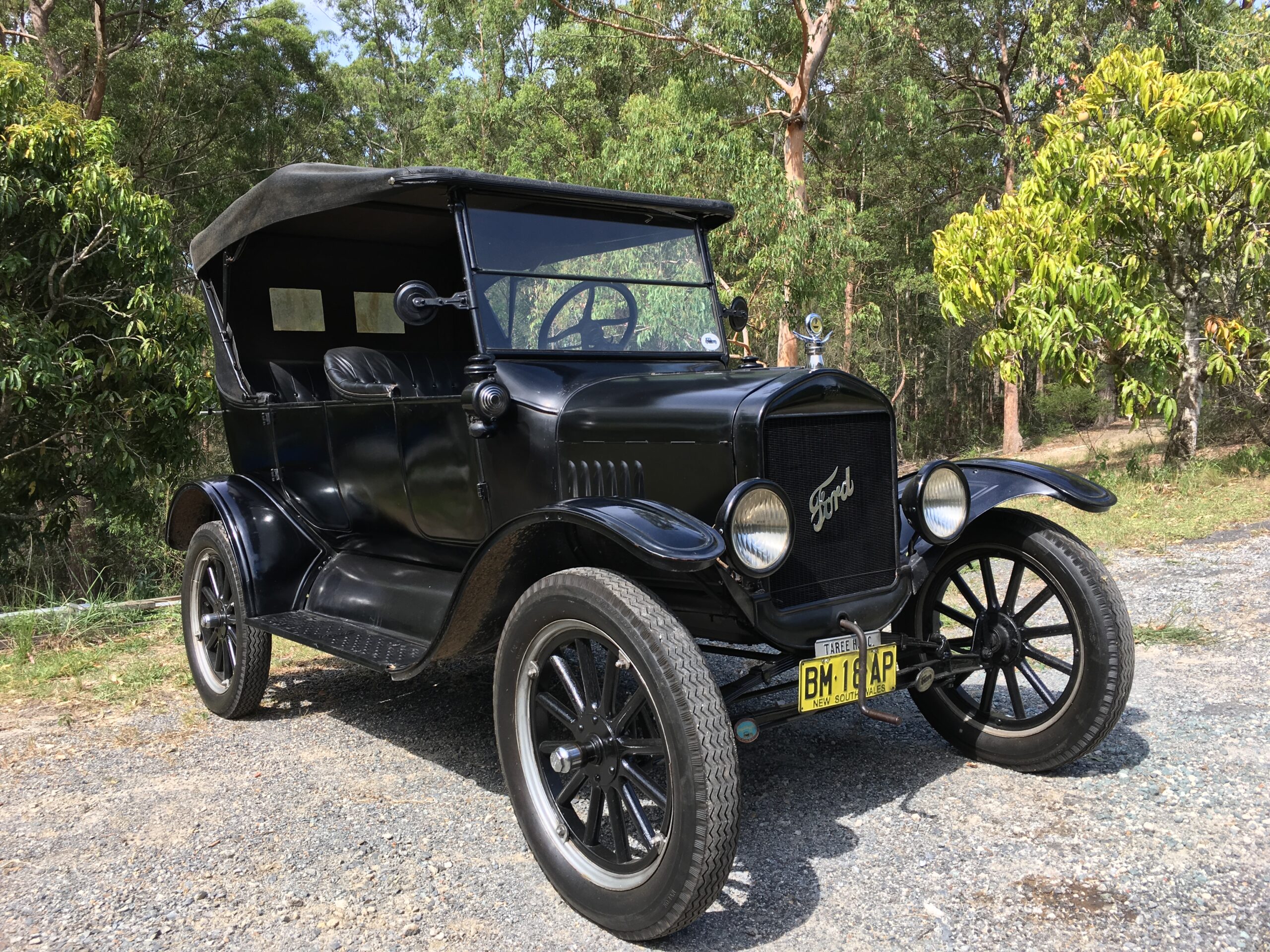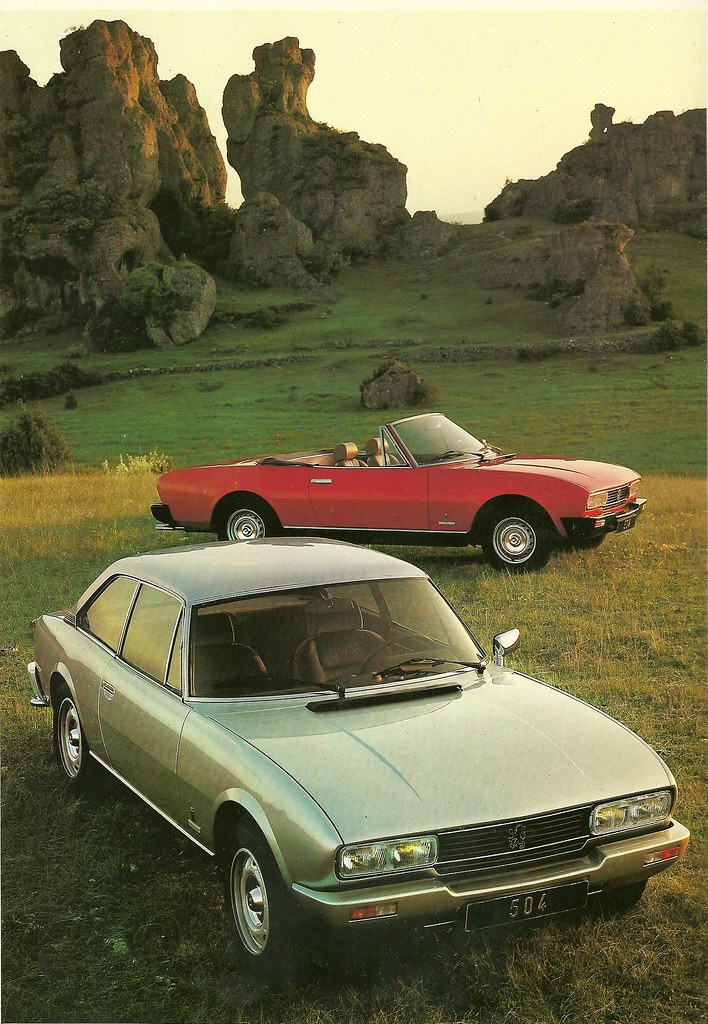
The 1980s often conjure images of vibrant fashion and eclectic music, but for automotive enthusiasts, it was a truly groundbreaking decade. Following the significant shifts of the 1970s, which saw a decline in raw performance and a heightened focus on environmental and safety concerns, American car manufacturers found themselves at a crossroads. Yet, as the calendar turned to a new decade, a renewed spirit of innovation emerged, pushing companies to introduce daring new designs and concepts designed to captivate buyers and redefine what an American car could be.
This era, perhaps unexpectedly, ushered in a hidden muscle renaissance. While many influential models became widely known, our journey today is not about those celebrated machines that consistently graced billboards and showrooms. Instead, we’re delving deep into the archives to unearth those often-forgotten models that, despite their brilliance, didn’t always stand the test of time in public memory. These rare vehicles, from turbocharged powerhouses to sophisticated design statements, tell a compelling story of an industry pushing boundaries in performance, luxury, and distinctive styling.
Join us as we embark on a trip down memory lane, shining a spotlight on some of the most obscure yet significant American cars of the 1980s. These machines, featuring everything from advanced aerodynamics to powerful V8 engines, not only represent engineering triumphs of their time but also continue to captivate collectors and enthusiasts who appreciate their unique attributes and the bold era they represent. Get ready to discover the true, untamed spirit of American automotive innovation.
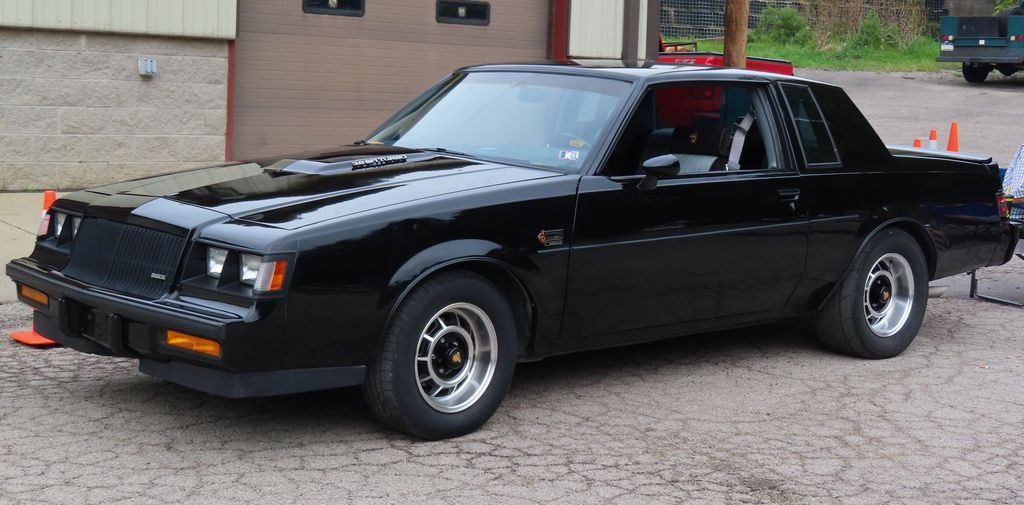
1. **1987 Buick GNX** The 1987 Buick GNX stands as an undisputed legend among American muscle cars, a turbocharged beast renowned for its incredible performance wrapped in an almost understated, stealthy appearance. Equipped with a potent 3.8-liter turbocharged V6 engine, this automotive marvel unleashed 276 horsepower, propelling the GNX from 0 to 60 mph in a breathtaking 4.7 seconds. It swiftly earned its reputation as one of the fastest American cars of the 1980s, perfectly embodying the era’s growing fascination with advanced turbocharging technology.
Beyond its raw power, the GNX boasted several notable features that solidified its status as a high-performance icon. It was designed with a limited slip differential to ensure maximum traction and a sleek, aggressive design that gave it an unmistakable presence without being overtly flashy. Produced in exceptionally limited numbers, with only 547 units ever built, the GNX became an instant collector’s item, enhancing its allure and desirability in the automotive world. Its scarcity, combined with its groundbreaking performance, made it a true automotive unicorn.
Today, the Buick GNX remains a highly sought-after collectible, embodying a unique blend of brute force and refined engineering. Its legacy as a “sleeper hit” continues to captivate car enthusiasts, who appreciate its immense power discreetly packaged within its distinctive silhouette. The GNX is not just a car; it’s a testament to a pivotal moment in American automotive history when unconventional engineering achieved truly spectacular results, securing its place as a revered symbol of 1980s performance.
Read more about: Bring Back a Legend: 19 Classic Cars Perfect for Restoration and Hot Rodding
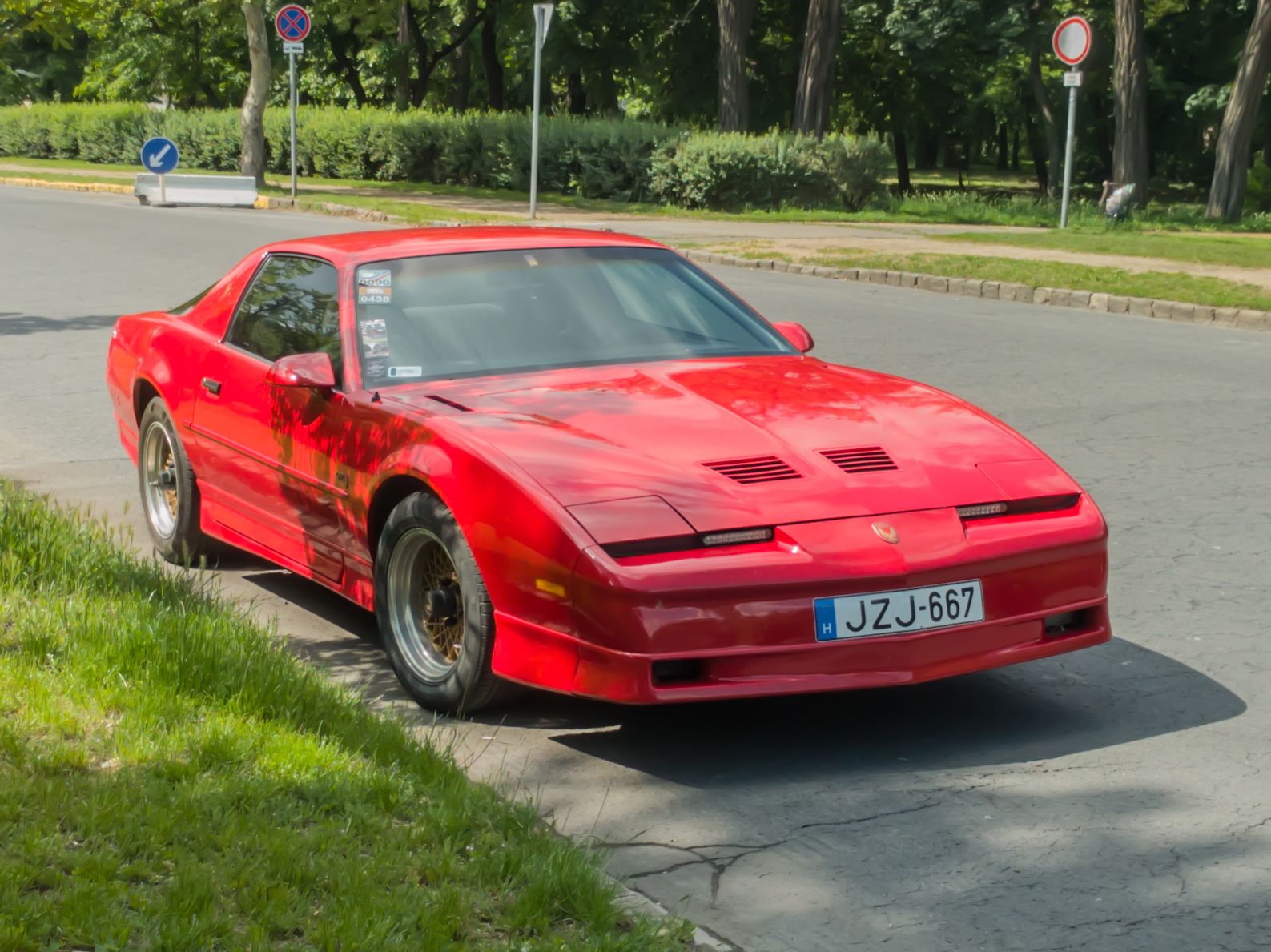
2. **Pontiac Trans Am GTA** Widely regarded by most car fans as the pinnacle of the third-generation Pontiac F-body, the Trans Am GTA debuted in 1987 as the top-of-the-range Firebird offering. This comprehensive package remained available until the 1992 model year and was produced in relatively limited numbers, ensuring its exclusivity and appeal. The true prowess of the GTA lay in its meticulously engineered engine and the revolutionary WS6 handling package, both designed to deliver an unparalleled driving experience for the era.
Under the hood, the Trans Am GTA featured a formidable 350 V8 engine, initially producing 210 horsepower in early models and escalating to an impressive 245 horsepower in later iterations. A popular rumor circulated that this engine was identical to the one found in the Corvette, given its shared TPI fuel injection system and displacement. However, this was not entirely accurate; while sharing similar architecture, the Corvette utilized aluminum heads, whereas the Pontiac employed durable iron cast ones. Despite this distinction, the power output and overall performance between the two were remarkably similar, delivering thrilling acceleration and a visceral driving feel.
The secret to the GTA’s exceptional road holding and braking capabilities was its sophisticated WS6 package. This performance enhancement consisted of a full complement of four disc brakes, providing superior stopping power, coupled with a significantly stiffer suspension system for improved handling precision. Furthermore, the WS6 package included stronger sway bars, specialized wheels, and high-performance tires, all meticulously calibrated to offer unmatched grip and responsiveness. This holistic approach to performance made the Trans Am GTA a true force on the road, cementing its reputation as a driver’s car.
Car Model Information: 2025 Volkswagen Atlas 2.0T SE
Name: Pontiac Firebird
Caption: The second, third, and fourth generations of,the Pontiac Firebird Trans Am
Manufacturer: Pontiac (automobile)
Production: February 23, 1967 – August 30, 2002
ModelYears: 1967 – 2002
Class: Pony car,Muscle car
Platform: GM F platform
Related: Chevrolet Camaro
Layout: Front engine, rear-wheel-drive layout
Categories: 1970s cars, 1980s cars, 1990s cars, 2000s cars, All articles with dead external links
Summary: The Pontiac Firebird is an American automobile built and produced by Pontiac from the 1967 to 2002 model years. Designed as a pony car to compete with the Ford Mustang, it was introduced on February 23, 1967, five months after GM’s Chevrolet division’s platform-sharing Camaro. This also coincided with the release of the 1967 Mercury Cougar, Ford’s upscale, platform-sharing version of the Mustang.
The name “Firebird” was also previously used by GM for the General Motors Firebird series of concept cars in the 1950s.
Get more information about: Pontiac Firebird
Buying a high-performing used car >>>
Brand: Pontiac Model: Trans Am GTA
Price: $40,000 Mileage: 8,605 mi.
Read more about: America’s Muscle Car Saga: Exploring Icons from Rocket 88 to Hellcat
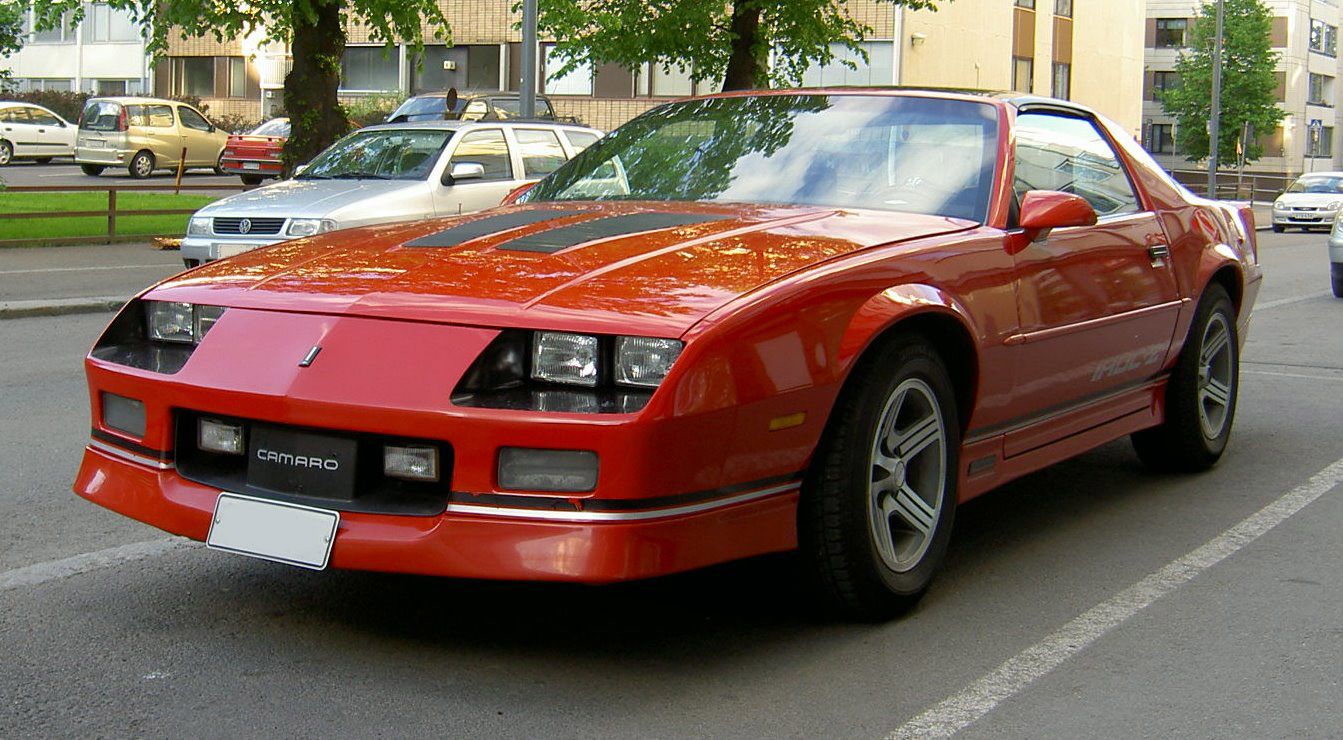
3. **1985 Chevrolet Camaro IROC-Z** The 1985 Chevrolet Camaro IROC-Z emerged as a formidable special performance variant, intricately designed to compete directly with iconic rivals such as the Ford Mustang and Dodge Challenger. Born from a unique collaboration between Chevrolet and the prestigious International Race of Champions (IROC) series, this Camaro was engineered with a clear focus on delivering exceptional speed and agility, making it a favorite for both street performance and enthusiastic everyday driving. Its distinctive name paid homage to the popular racing competition that inspired its very creation.
Powering the 1985 Camaro IROC-Z was a robust 5.0-liter V8 engine, delivering an impressive output of over 200 horsepower. This powerhouse provided the car with compelling acceleration and a thrilling performance profile, indicative of Chevrolet’s commitment to reclaim its muscle car heritage. Complementing its potent engine, the IROC-Z featured a sport-tuned suspension system, meticulously calibrated to enhance handling and responsiveness. This setup included a front stabilizer bar and a rear anti-roll bar, working in harmony to minimize body roll and maintain stability during aggressive maneuvers.
The design of the IROC-Z was as aggressive as its performance, drawing inspiration directly from its racing namesake. It boasted a bold, distinctive front grille and a powerful, athletic stance that immediately communicated its high-performance intentions. With the capability to accelerate from 0 to 60 mph in a swift 5.5 seconds and reaching a top speed of 130 mph, the IROC-Z was more than just a car; it became the ultimate symbol of American muscle car culture in the mid-1980s. Its sharp handling and distinctive styling ensured its place as a revered icon among enthusiasts.
Car Model Information: 2023 Chevrolet Camaro 1LT
Name: Chevrolet Camaro
Manufacturer: Chevrolet
Production: 1966–2002,2009–2023
ModelYears: 1967–2002,2010–2024
Class: Pony car
BodyStyle: coupe,convertible
Platform: GM F platform,GM Zeta platform,GM Alpha platform
Layout: Front-engine, rear-wheel-drive layout
Categories: 1970s cars, 1980s cars, 1990s cars, 2+2 coupés, 2000s cars
Summary: The Chevrolet Camaro is a mid-size American automobile manufactured by Chevrolet, classified as a pony car. It first went on sale on September 29, 1966, for the 1967 model year and was designed to compete with the Ford Mustang. The Camaro shared its platform and major components with the Firebird, produced by General Motors’ Pontiac division that was also introduced for the 1967 model year.
Four distinct generations of the Camaro were developed before production ended in 2002. The nameplate was revived on a concept car that evolved into the fifth-generation Camaro; production started on March 16, 2009.
Production of the sixth generation of the Camaro ended in December 2023, for the 2024 model year.
Get more information about: Chevrolet Camaro
Buying a high-performing used car >>>
Brand: Chevrolet Model: Camaro
Price: $27,131 Mileage: 48,869 mi.
Read more about: Roaring Legends: The Power and Legacy of Iconic V8 Muscle Cars
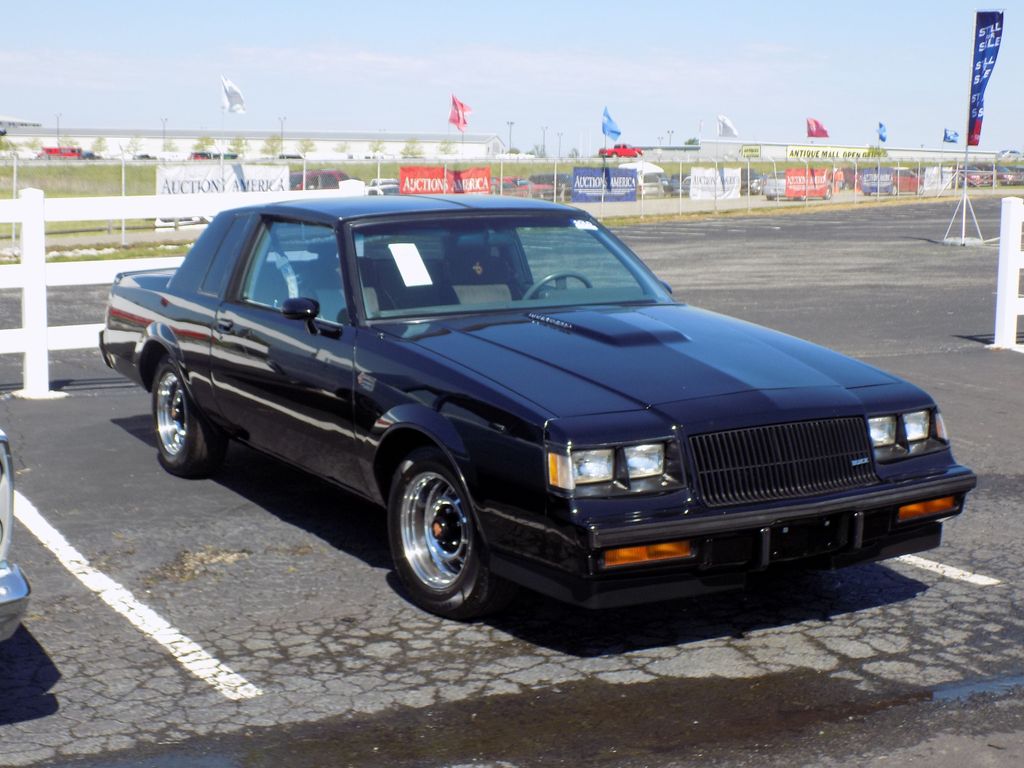
4. **1987 Buick Grand National** The 1987 Buick Grand National stands as an automotive legend, a potent muscle car from the 1980s that left an indelible mark with its turbocharged V6 engine and a compellingly understated appearance. This vehicle was capable of producing a remarkable 245 horsepower, enabling it to accelerate from 0 to 60 mph in under six seconds, a truly astounding feat for its time. Its combination of immense, almost hidden power and a sleek, ominous aesthetic quickly transformed it into a sleeper hit among discerning car enthusiasts and collectors alike.
The Grand National’s story began in 1982, marking the dawn of a new era for American high-performance vehicles, conceived by General Motors as a high-performance variant of the already popular Buick Regal. The 1987 model, in particular, is extraordinarily sought after due to its increased performance figures and its notably limited production numbers, which further amplified its exclusivity. While the general Grand National often produced 215 horsepower, the 1987 iteration elevated the game, demonstrating Buick’s engineering prowess. It featured a 4-speed automatic transmission with a manual override, giving drivers more control over its formidable power.
The Buick Grand National rapidly transcended its status as a mere car, evolving into a cultural phenomenon. Its unique blend of blistering performance, distinctive styling, and inherent exclusivity cemented its position as a true status symbol among American car owners. It became a favored choice for both amateur and professional racers, who deeply appreciated its powerful engine and remarkably agile handling. This popularity fueled a thriving aftermarket industry, allowing owners to extensively customize their Grand Nationals, further cementing its legacy and collectibility.
Car Model Information: 2025 Volkswagen Atlas 2.0T SE
Name: Buick Regal
Caption: 2020 Regal Sportback
Manufacturer: Buick
ModelYears: Unbulleted list
Sp: us
Predecessor: Buick Skylark#Second generation (1968–1972),Buick Century
Successor: Buick LaCrosse
Categories: 1980s cars, 1990s cars, 2000s cars, 2010s cars, 2020s cars
Summary: The Buick Regal is a line of mid-size cars marketed by Buick since 1973. Serving as the premium mid-size/intermediate car of the Buick product range for nearly its entire production, the Regal initially served as the divisional counterpart of the Pontiac Grand Prix and Oldsmobile Cutlass Supreme; since the late 2000s, the model line has been derived from the Opel Insignia. The Regal also serves as the basis of the high-performance Grand National, Gran Sport (GS), and Buick GNX coupes.
Through its production, the Regal has been marketed under a wide variety of body styles, including two-door coupes and four-door sedans (currently in production), along with a 5-door liftback sedan and a 5-door station wagon; the latter (the 2018-2020 Regal TourX) was the first Buick station wagon marketed since the retirement of both the Century and Roadmaster Estates after 1996. The turbocharged LD5 3.8L V6 used in the second generation was used to showcase the motorsports presence of the brand; though offered with other vehicles (including Chevrolets and Pontiacs), the turbocharged engine is most commonly associated with the Regal. During the 1990s, the V6 regained forced induction, with a supercharger replacing the turbocharger.
In 1999, General Motors commenced sales of its vehicles in China, with the Buick Regal serving as its introductory model of the joint venture SAIC-GM. After 2004, Buick retired the model line in North America, as it replaced both the Regal and the Century with the Buick LaCrosse. Following the introduction of the second-generation Regal for China for 2008, the model line returned to North America for the 2011 model year, slotted slightly below the LaCrosse. Following the introduction of the sixth-generation Regal (sourced entirely from Opel) for 2018, GM sold Opel to PSA (now Stellantis), ending sales in North America after the 2020 model year. Currently, the Insignia B-derived Regal remains in production by SAIC-GM.
Get more information about: Buick Regal
Buying a high-performing used car >>>
Brand: Buick Model: Grand National
Price: $40,000 Mileage: 8,605 mi.
Read more about: Unearthing Hidden Gems: 14 Iconic Classic Cars That Are Surprisingly Affordable Today
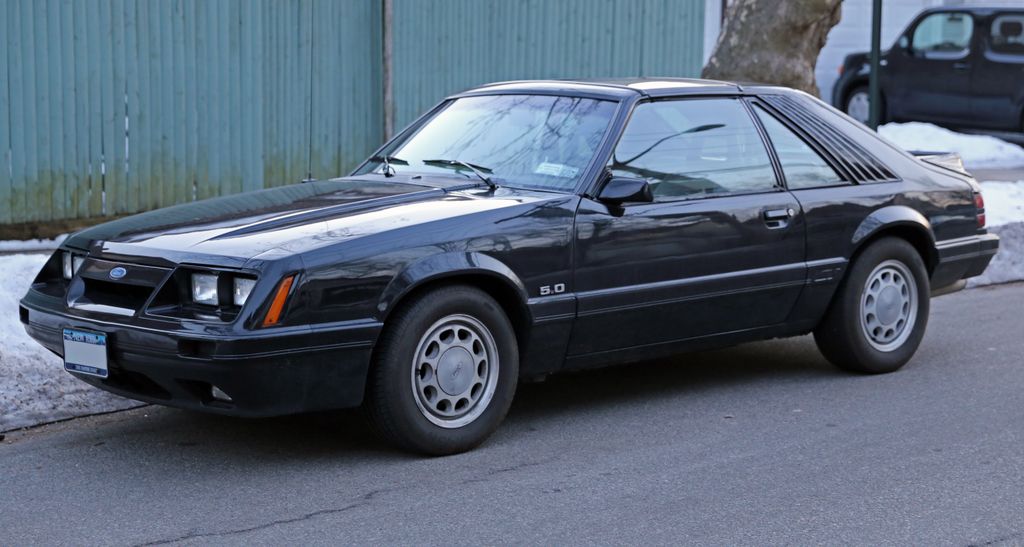
5. **1986 Ford Mustang GT** The 1986 Ford Mustang GT represented a pivotal moment in the storied history of the Mustang lineup, signifying a major shift in its design philosophy and engineering. This model featured a dramatically more aerodynamic body, moving away from its predecessors’ more angular aesthetics, and was powered by a truly formidable 5.0-liter V8 engine. It offered a compelling and perfectly balanced blend of raw power, exhilarating performance, and a surprising degree of comfort, making it a versatile and appealing choice for a wide range of drivers.
Beneath its refreshed exterior, the 1986 Ford Mustang GT housed its renowned 5.0-liter V8 engine, which delivered a robust 210 horsepower and an impressive 290 lb-ft of torque, ensuring brisk acceleration and sustained power. Drivers had the option of pairing this potent engine with either a precise 5-speed manual transmission or a smooth 3-speed automatic, catering to different driving preferences. The GT model’s handling was sharpened by a live rear axle featuring a stabilizer bar and an additional front stabilizer bar, contributing to its responsive and engaging ride. Stopping power was ensured by 8-inch front disc brakes and equally capable 8-inch rear disc brakes.
In terms of performance, the 1986 Ford Mustang GT was a serious contender, boasting a 0-60 mph acceleration time of approximately 6.5 seconds and reaching a top speed of around 130 mph. Its interior was thoughtfully designed, featuring a leather-wrapped steering wheel, a leather-wrapped shift knob, and a leather-wrapped gearshift, enhancing the tactile driving experience. This car became an enduring symbol of American muscle, defined by its iconic look and a raw, engaging driving experience that continues to resonate with enthusiasts. Due to its compelling performance and relative rarity today, the 1986 Ford Mustang GT is widely considered a highly collectible car, celebrating a distinctive chapter in American automotive history.
Car Model Information: 2025 Volkswagen Atlas 2.0T SE
Name: Ford Mustang
Caption: 2018 Ford Mustang GT 5.0
Aka: Ford T5 (Germany)
Manufacturer: Ford Motor Company
Production: March 1964 – present
ModelYears: 1965–present
Class: Unbulleted list
BodyStyle: Unbulleted list
Layout: Front-engine, rear-wheel-drive layout
Categories: 1970s cars, 1980s cars, 1990s cars, 2+2 coupés, 2000s cars
Summary: The Ford Mustang is a series of American automobiles manufactured by Ford. In continuous production since 1964, the Mustang is currently the longest-produced Ford car nameplate. Currently in its seventh generation, it is the fifth-best selling Ford car nameplate. The namesake of the “pony car” automobile segment, the Mustang was developed as a highly styled line of sporty coupes and convertibles derived from existing model lines, initially distinguished by “long hood, short deck” proportions.
Originally predicted to sell 100,000 vehicles yearly, the 1965 Mustang became the most successful vehicle launch since the 1927 Model A. Introduced on April 17, 1964 (16 days after the Plymouth Barracuda), over 400,000 units were sold in its first year; the one-millionth Mustang was sold within two years of its launch. In August 2018, Ford produced the 10-millionth Mustang; matching the first 1965 Mustang, the vehicle was a 2019 Wimbledon White convertible with a V8 engine.
The success of the Mustang launch led to multiple competitors from other American manufacturers, including the Chevrolet Camaro and Pontiac Firebird (1967), AMC Javelin (1968), and Dodge Challenger (1970). It also competed with the Plymouth Barracuda, which was launched around the same time. The Mustang also had an effect on designs of coupes worldwide, leading to the marketing of the Toyota Celica and Ford Capri in the United States (the latter, by Lincoln-Mercury). The Mercury Cougar was launched in 1967 as a unique-bodied higher-trim alternative to the Mustang; during the 1970s, it included more features and was marketed as a personal luxury car.
From 1965 until 2004, the Mustang shared chassis commonality with other Ford model lines, staying rear-wheel-drive throughout its production. From 1965 to 1973, the Mustang was derived from the 1960 Ford Falcon compact. From 1974 until 1978, the Mustang (denoted Mustang II) was a longer-wheelbase version of the Ford Pinto. From 1979 until 2004, the Mustang shared its Fox platform chassis with 14 other Ford vehicles (becoming the final one to use the Fox architecture). Since 2005, Ford has produced two generations of the Mustang, each using a distinct platform unique to the model line.
Through its production, multiple nameplates have been associated with the Ford Mustang series, including GT, Mach 1, Boss 302/429, Cobra (separate from Shelby Cobra), and Bullitt, along with “5.0” fender badging (denoting 4.9 L OHV or 5.0 L DOHC V8 engines).
Get more information about: Ford Mustang
Buying a high-performing used car >>>
Brand: Ford Model: Mustang GT
Price: $40,000 Mileage: 8,605 mi.
Read more about: Engine Roar and Silver Screen Glory: The Some Most Iconic Movie Cars That Left an Indelible Mark

6. **1988 Chevrolet Monte Carlo SS** The 1988 Chevrolet Monte Carlo SS stands as an iconic symbol of American muscle, a legend born from Chevrolet’s desire to fiercely compete with the Ford Thunderbird in the high-stakes arena of NASCAR racing. Chevrolet’s dedicated engineers and visionary designers poured countless hours into crafting a car that was not only aesthetically stunning but also delivered truly exceptional performance on both the street and the track. The culmination of their efforts was a sleek and powerful sports coupe that quickly carved out its place as a revered American muscle machine.
The Monte Carlo SS boasted a bold and aggressively styled design, perfectly capturing the spirit of its competitive origins. This included a distinctive sloping front grille, artfully flared fenders that hinted at its underlying power, and a prominent rear spoiler that enhanced its aerodynamic profile and unmistakable presence. Powering the SS model was a robust 7-liter V8 engine, unleashing an impressive 200 horsepower and a substantial 300 lb-ft of torque. This engine provided the muscular performance expected of a true American legend.
Further elevating its performance credentials, the Monte Carlo SS featured a meticulously sport-tuned suspension system. This advanced setup delivered a smooth and responsive ride while simultaneously maintaining exceptional handling characteristics, allowing drivers to confidently push the car’s limits. More than 100,000 of these powerful SS models were produced, making them a significant presence on American roads. The 1988 Chevrolet Monte Carlo SS remains a testament to a golden age of American performance, a car that perfectly blended aggressive design with potent capabilities, earning its enduring status among enthusiasts and collectors alike. It continues to be celebrated as a benchmark of 1980s American automotive engineering and styling.
As our deep dive into the extraordinary American automotive landscape of the 1980s continues, we unveil another captivating selection of vehicles that, despite their significant contributions, often remain overlooked. This next set of hidden gems further illustrates the innovative spirit and bold design choices that defined this remarkable decade, proving that American manufacturers were indeed pushing the envelope in terms of engineering prowess, market impact, and driving dynamics. These are the machines that continue to intrigue collectors and enthusiasts, each telling a unique story of power, style, and engineering ambition.
Car Model Information: 2025 Volkswagen Atlas 2.0T SE
Name: Chevrolet Monte Carlo
Manufacturer: Chevrolet
Production: 1969–1987,1994–2007
ModelYears: 1970–1988,1995–2007
Class: Personal luxury car
BodyStyle: coupé
Layout: FR layout
Caption: 2006 Chevrolet Monte Carlo LS
Categories: 1980s cars, 1990s cars, 2000s cars, All Wikipedia articles written in American English, All articles needing additional references
Summary: The Chevrolet Monte Carlo is a two-door coupe that was manufactured and marketed by the Chevrolet division of General Motors. Deriving its name from the city in Monaco, the Monte Carlo was marketed as the first personal luxury car of the Chevrolet brand. Introduced for the 1970 model year, the model line was produced across six generations through the 2007 model year, with a hiatus from 1989 until 1994. The Monte Carlo was a variant of the Pontiac Grand Prix throughout its production.
From 1970 until 1972, the Monte Carlo rode on the unique “A-Special” platform with the Grand Prix, shifting to the standard A-body intermediate chassis from the 1973 through 1977 model years. For 1978, the Monte Carlo line underwent downsizing, but was still considered a midsized coupe. The rear-wheel drive A-body platform of this generation of Monte Carlo was redesignated as the G-body when GM’s front-wheel drive A-body cars were introduced for the 1982 model year. After an abbreviated 1988 model year, the Monte Carlo was replaced by the two-door Chevrolet Lumina.
For the 1995 model year, the Monte Carlo was revived, replacing the two-door Lumina. It shared the front-wheel drive W-platform with the two-door Grand Prix, and was the largest coupe in the Chevrolet lineup. After the 2002 model year, the Grand Prix coupe was discontinued, the Monte Carlo became the largest two-door model produced by an American auto manufacturer.
In response to declining sales of the model line, Chevrolet discontinued the Monte Carlo after the 2007 model year. During much of its production, the Monte Carlo represented the Chevrolet brand in stock car racing. During the 1980s, the Monte Carlo SS was introduced, featuring aerodynamically enhanced styling; as part of its revival, the Monte Carlo again represented Chevrolet in stock car racing from 1995 through its discontinuation.
Get more information about: Chevrolet Monte Carlo
Buying a high-performing used car >>>
Brand: Chevrolet Model: Monte Carlo
Price: $40,000 Mileage: 8,605 mi.
Read more about: 12 Iconic Rides from Movies & TV That Drove Straight Into Our Hearts
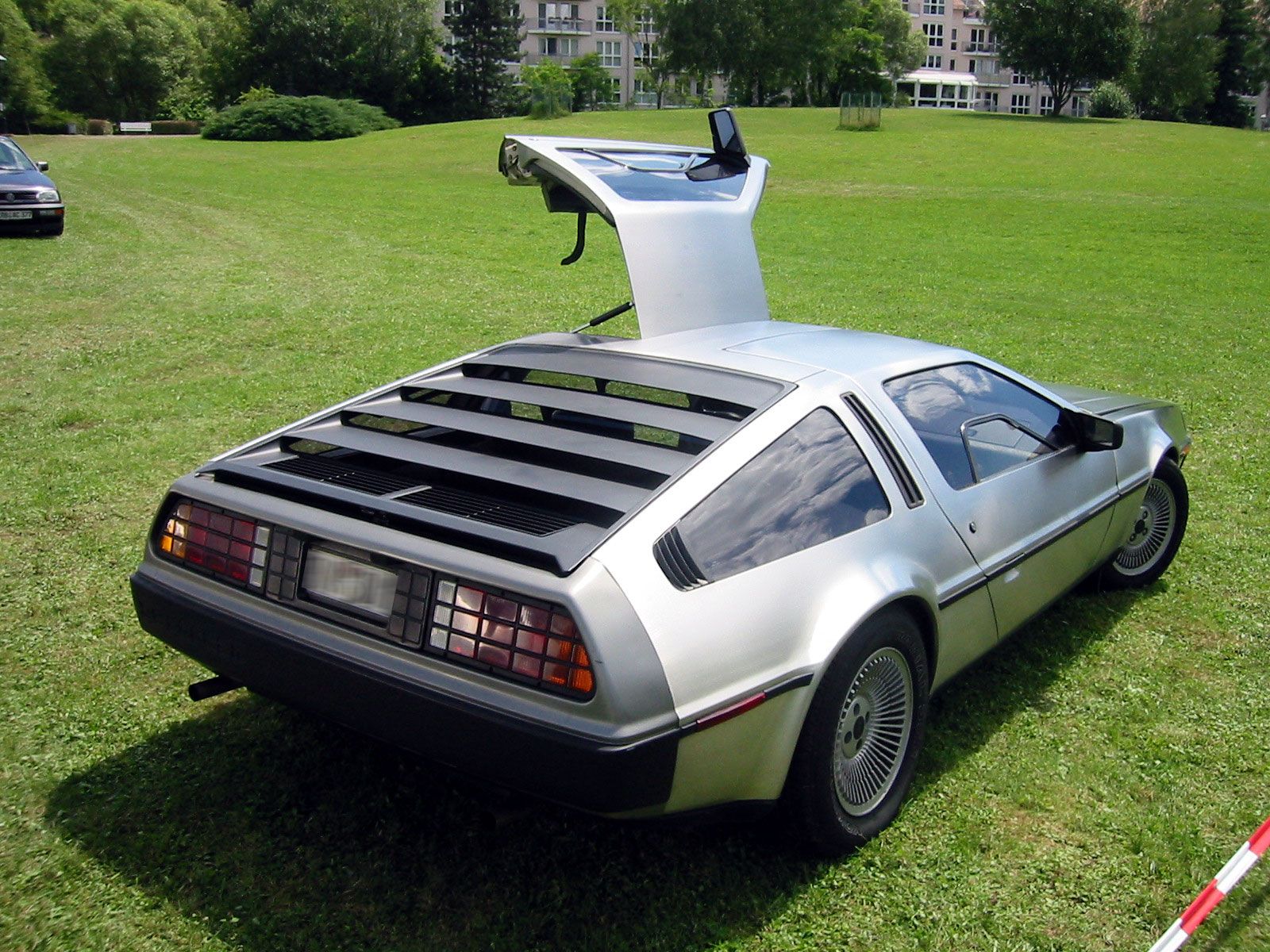
7. **1981 DeLorean DMC-12** No discussion of rare 1980s cars would be complete without acknowledging the instantly recognizable 1981 DeLorean DMC-12. This vehicle stands out not just for its unique design but also for its profound cultural impact, largely cemented by its starring role in the iconic *Back to the Future* movie trilogy. Its futuristic aesthetic, defined by its signature brushed stainless steel body panels and those unforgettable gull-wing doors, ensures it remains one of the most iconic and visually distinctive cars of the decade.
The DMC-12, originally envisioned by John DeLorean as a high-performance sports car, achieved a modest top speed of 110 mph, powered by a 2.85-liter V6 engine. While its performance figures might seem conservative compared to some of its contemporaries, its unique design and innovative construction, featuring a stainless steel body, set it apart. Despite its ultimately low sales numbers during its production run, the DMC-12’s sheer uniqueness and subsequent pop culture fame have transformed it into a highly collectible classic that continues to captivate enthusiasts and pop culture fans alike. Today, this unique piece of automotive history often commands a market value ranging from $20,000 to $40,000, with pristine examples or those with notable historical connections fetching even higher prices.
Car Model Information: 1981 Delorean DMC-12
Name: DMC DeLorean
Alt: 1983 DeLorean
Caption: 1983 DeLorean
Manufacturer: DeLorean Motor Company
Production: January 21, 1981 – December 1982
ModelYears: 1981–1983
Assembly: Dunmurry
Designer: Giorgetto Giugiaro
Class: Sports car
BodyStyle: coupé
Layout: Rear-engine, rear-wheel-drive layout
Doors: Gull-wing doors
Engine: 2.85 L
Abbr: on
Powerout: 130 hp
Transmission: 5-speed manual ,3-speed automatic
Wheelbase: 2413 mm
Length: 4267 mm
Width: 1988 mm
Height: 1140 mm
Weight: 1233 kg
Sp: us
Categories: 1980s cars, All Wikipedia articles written in American English, Articles with short description, Automobiles with backbone chassis, Automobiles with gull-wing doors
Summary: The DMC DeLorean is a rear-engine, two-seat sports car manufactured and marketed by John DeLorean’s DeLorean Motor Company (DMC) for the American market from 1981 until 1983—ultimately the only car brought to market by the fledgling company. The DeLorean is sometimes referred to by its internal DMC pre-production designation, DMC-12, although this was not used in sales or marketing materials for the production model.
Designed by Giorgetto Giugiaro, the DeLorean is noted for its gull-wing doors and brushed stainless-steel outer body panels, as well as its lack of power and performance compatible with its looks and price. Though its production was short-lived, the DeLorean became widely known after it was featured as the time machine in the Back to the Future films.
With the first production car completed on January 21, 1981, the design incorporated numerous minor revisions to the hood, wheels and interior before production ended in late December 1982, shortly after DMC filed for bankruptcy and after total production reached an estimated 9,000 units.
Despite the car having a reputation for poor build quality and an unsatisfactory driving experience, the DeLorean continues to have a strong following, driven in part by the popularity of Back to the Future. 6,500 DeLoreans were estimated to still be on the road as of 2015.
Get more information about: DMC DeLorean
Buying a high-performing used car >>>
Brand: DeLorean Model: DMC-12
Price: Not Priced Mileage: 56,261 mi.
Read more about: Engine Roar and Silver Screen Glory: The Some Most Iconic Movie Cars That Left an Indelible Mark
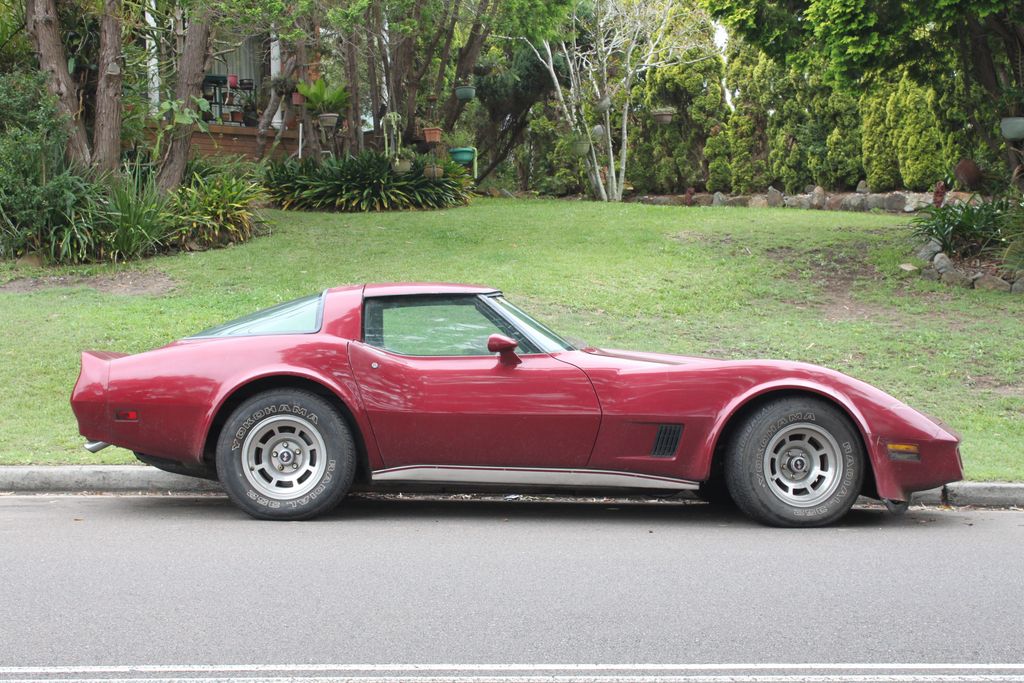
8. **1980 Chevrolet Corvette C3** The 1980 Chevrolet Corvette C3 represents a pivotal point in the illustrious history of America’s beloved sports car. As a key part of the iconic third generation of the Corvette, this model retained the stunning, sleek lines and muscular contours that had become synonymous with the nameplate, solidifying its status as both a performance car and a potent symbol of American luxury. It skillfully navigated the challenging automotive landscape of the era, offering an exhilarating driving experience even as the broader industry faced the constraints of the oil crisis.
Underneath its aggressive, aerodynamically refined exterior, the 1980 C3 was equipped with a robust 5.7-liter V8 engine, delivering the power and thrilling acceleration expected from a Corvette. Despite the general decline in performance across the industry due to fuel efficiency concerns, this iteration managed to maintain excellent handling characteristics, offering a responsive and engaging ride that continued to excite drivers. The 1980 model, in particular, benefited from a series of aerodynamic improvements, further enhancing its already sleek design and ensuring its enduring appeal among collectors who value its blend of classic styling and capable performance. A well-maintained 1980 C3 can typically be found for $12,000 to $25,000, with top-tier examples reaching higher valuations.
Car Model Information: 2025 Volkswagen Atlas 2.0T SE
Name: Chevrolet Corvette (C3)
Caption: 1973 Chevrolet Corvette Stingray
Manufacturer: Chevrolet
Aka: Chevrolet Corvette Stingray,(1968–76)
Production: August 1967 – October 1982
ModelYears: 1968–82
Platform: General Motors Z platform
Assembly: St. Louis Truck Assembly,Bowling Green Assembly Plant
Predecessor: Chevrolet Corvette (C2)
Successor: Chevrolet Corvette (C4)
Class: Sports car
BodyStyle: Convertible (car),coupé
Layout: Mid-engine design
Engine: {{cvt,305,cuin,L,1,Chevrolet small-block engine (first- and second-generation)#LG4,V8 engine
Transmission: manual transmission,manual transmission,Turbo-Hydramatic,Automatic transmission
Wheelbase: cvt
Length: {{cvt,182.1,in,mm,0
Width: {{cvt,69.2,in,mm,0
Height: {{cvt,47.8,in,mm,0
Weight: cvt
Designer: GM & Chevrolet design staff,Zora Arkus-Duntov,Bill Mitchell (designer)
Categories: 1970s cars, 1980s cars, All articles with unsourced statements, Articles with short description, Articles with unsourced statements from April 2024
Summary: The Chevrolet Corvette (C3) is the third generation of the Corvette sports car that was produced from 1967 until 1982 by Chevrolet for the 1968 to 1982 model years. Engines and chassis components were mostly carried over from the previous generation, but the body and interior were new. It set new sales records with 53,807 produced for the 1979 model year. The C3 was the second Corvette to carry the Stingray name, though only for the 1969–76 model years. This time it was a single word as opposed to Sting Ray as used for the 1963–67 C2 generation. The name was then retired until 2014 when it returned with the release of the C7.
The most expensive Corvette C3 to sell in history was a 1969 L88 Lightweight, one of only four lightweight L88s to be produced. It was sold by Barrett-Jackson in January 2014 for $2,860,000 (£1,728,941).
Get more information about: Chevrolet Corvette (C3)
Buying a high-performing used car >>>
Brand: Chevrolet Model: Corvette C3
Price: $40,000 Mileage: 8,605 mi.
Read more about: The Apex of Automotive Value: Exploring the World’s Most Expensive Cars Sold at Public Auction
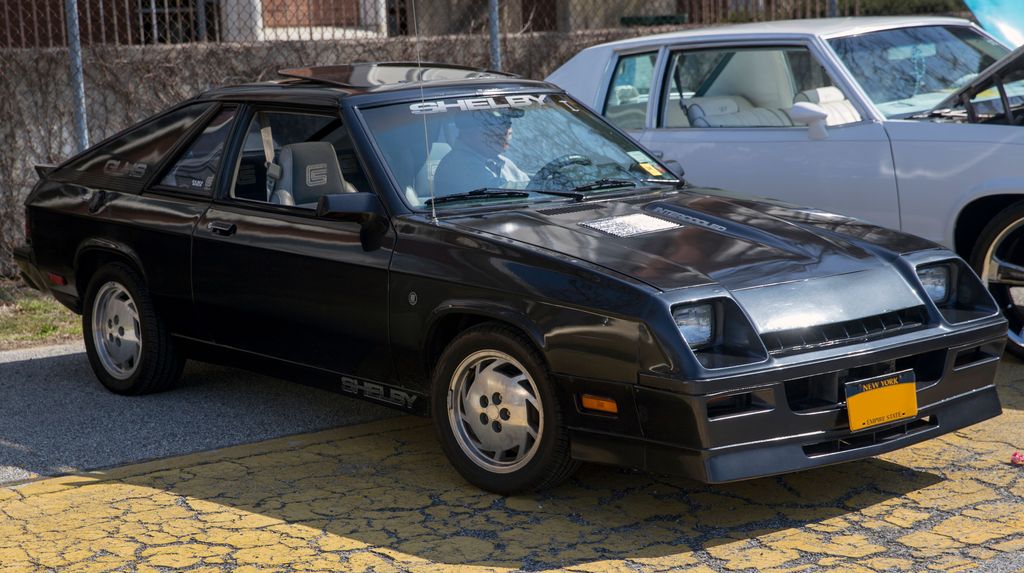
9. **1987 Dodge Charger Shelby GLHS** The 1987 Dodge Charger Shelby GLHS stands as a unique and often-overlooked high-performance variant, born from Dodge’s ambitious efforts to directly challenge the formidable Ford Mustang and Chevrolet Camaro in the competitive muscle car arena. While the Shelby name proudly adorned this Charger, it’s worth noting that the car was not, in fact, designed by Shelby American; rather, its creation was spearheaded by the Dodge division of Chrysler, aiming to infuse a more direct performance lineage into its offerings. This distinction highlights its unique position as a factory-backed performance icon with a legendary namesake.
Powering the GLHS was a potent 5.0-liter V8 engine, which, according to information from the period, produced a robust 210 horsepower and 260 pounds of torque. This engine was notably similar in specifications to the one found in the 1987 Ford Mustang GT model, underscoring its competitive intent and the engineering focus on delivering compelling performance. Despite its unexpected engine choice for the platform, the GLHS aimed to provide an agile and powerful driving experience, reflecting a fascinating chapter in American performance car development. The GLHS emerged as a rare and formidable force on the road, embodying a bold attempt by Dodge to carve out its niche in the high-performance market with a distinct offering that blended everyday usability with a clear performance edge.
Car Model Information: 2022 Dodge Charger SRT Hellcat Widebody
Name: Dodge Charger
Caption: 1969 Dodge Charger
Manufacturer: Dodge
Production: 1966–1978,1981–1987,2005–present
ModelYears: 1966–1978,1982–1987,2006–present
Categories: 1960s cars, 1970s cars, 1980s cars, 2000s cars, 2010s cars
Summary: The Dodge Charger is a model of automobile marketed by Dodge in various forms over eight generations since 1966.
The first Charger was a show car in 1964. A 1965 Charger II concept car resembled the 1966 production version.
In the United States, the Charger nameplate has been used on mid-size cars, personal luxury coupes, subcompact hatchbacks, and full-size sedans.
Get more information about: Dodge Charger
Buying a high-performing used car >>>
Brand: Dodge Model: Charger
Price: $82,991 Mileage: 1,802 mi.

10. **1987 Ford Mustang LX 5.0** While the 1986 Ford Mustang GT has already captured our attention, the 1987 Ford Mustang LX 5.0 represents a critically important and often-understated chapter in the Mustang’s illustrious history. This model marked a significant evolution for the lineup, offering a potent blend of performance and versatility that resonated deeply with a wide array of buyers. It delivered a powerful and agile driving experience, solidifying the Mustang’s reputation as a performance powerhouse accessible to the masses, making it a truly significant upgrade within the Mustang stable.
The genius of the 1987 LX 5.0 lay in its understated packaging coupled with the formidable 5.0-liter V8 engine, similar in output to the 1987 Ford Mustang GT and carrying forward the strong performance legacy of its predecessors. This particular iteration of the Mustang became a favorite for enthusiasts who sought the raw power and engaging driving dynamics of the GT model but preferred a more subdued, ‘sleeper’ aesthetic. Its lighter weight and less flamboyant styling, combined with its robust engine, made it a true performance bargain and a potent street machine capable of surprising many. This combination of affordability, raw power, and an unpretentious demeanor secured its status as a highly desirable classic, continuing to appeal to those who value pure performance over overt styling.
Car Model Information: 2025 Volkswagen Atlas 2.0T SE
Name: Third generation
Caption: 1990 Ford Mustang GT
Aka: Ford T5 (Germany)
Manufacturer: Ford Motor Company
Predecessor: Ford Mustang (second generation)
Successor: Ford Mustang (fourth generation)
Production: 1978 – 26 August 1993
ModelYears: 1979–1993
BodyStyle: convertible
Class: Pony car
Layout: Front-engine, rear-wheel-drive layout
Assembly: ubl
Wheelbase: cvt
Length: cvt
Width: 1979–82: {{cvt,67.4,in,mm,0
Height: 1979–82: {{cvt,51.5,in,mm,0
Weight: Coupe,1980: {{cvt,2608,lb,kg,0
Platform: Ford Fox platform
Related: Ford Durango,Ford Fairmont,Ford Granada (North America) #Second generation (1981–1982),Ford LTD (Americas) #Fourth generation (1983–1986),Ford Thunderbird (eighth generation),Ford Thunderbird (ninth generation),Mercury Capri#Second generation (1979–1986),Mercury Cougar #Fifth generation (1980–1982),Mercury Cougar #Sixth generation (1983–1988),Mercury Marquis#Fourth generation (1983–1986),Ford Fairmont#Mercury Zephyr,Lincoln Continental#Seventh generation (1982–1987),Lincoln Continental Mark VII
Engine: ubl
Transmission: Manual transmission,Automatic transmission
Designer: Jack Telnack
Categories: 1980s cars, 1990s cars, Articles with short description, CS1 Spanish-language sources (es), Cars discontinued in 1993
Summary: The third-generation Mustang is a pony car manufactured and marketed by Ford from 1979–1993, using the company’s Fox platform and colloquially called the Fox body Mustang. During its third generation, the Mustang evolved through several sub-models, trim levels, and drivetrain combinations during its production and seemed destined for replacement with a front-wheel drive Mazda platform. Company executives were swayed by consumer opinion and the rear-wheel drive Mustang stayed in production, while the front-wheel drive version was renamed the Ford Probe. Production ended with the introduction of the fourth-generation Mustang (SN-95) for the 1994 model year.
Get more information about: Ford Mustang (third generation)
Buying a high-performing used car >>>
Brand: Ford Model: Mustang LX 5.0
Price: $40,000 Mileage: 8,605 mi.
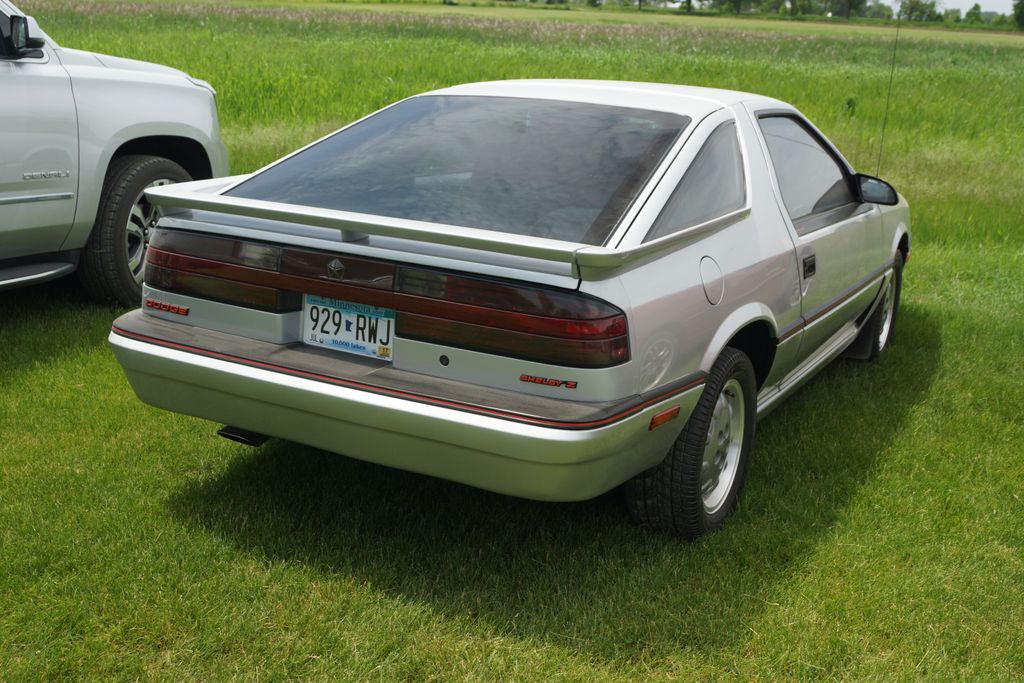
11. **1988 Dodge Daytona Shelby Z** The 1988 Dodge Daytona Shelby Z stands as a testament to the versatility of American performance, presenting itself as a sporty hatchback that proudly bore the legendary Shelby nameplate. This model demonstrated a distinct direction for performance, deviating from the traditional V8 muscle car formula and showcasing the potential of turbocharged four-cylinder engines. It represented a unique blend of practicality, modern design, and thrilling performance, appealing to a different segment of the enthusiast market.
Under its sleek, aerodynamic hood, the Daytona Shelby Z was equipped with a turbocharged 2.2-liter four-cylinder engine. This compact yet powerful engine was meticulously engineered to deliver impressive power relative to its size, providing a dynamic driving experience. The car was engineered with a clear focus on performance, achieving a quick 0-60 mph acceleration time of just under 7 seconds, a respectable feat for a car of its class during the late 1980s. Its distinctive styling, combined with its functional performance attributes, helped it carve out a niche, gaining a devoted following among fans of both traditional American muscle and the emerging sport compact scene, ensuring its lasting appeal as a rare and intriguing collectible. Today, well-preserved examples can fetch between $6,000 and $10,000, with those boasting low mileage and complete service records commanding higher prices.
Car Model Information: 2017 Dodge Charger Daytona 340 RWD
Caption: 1991 Dodge Daytona C/S
Predecessor: Dodge Challenger#Second generation (1978–1983)
Successor: Dodge Avenger,Plymouth Laser,Chrysler LeBaron#Third generation coupe/convertible (1987–1995)
Name: Dodge Daytona
Manufacturer: Dodge
Production: October 1983–February 1993
ModelYears: 1984–1993
Assembly: St. Louis, Missouri,Sterling Heights, Michigan
Class: Sports car
Layout: Front-engine, front-wheel-drive layout
Engine: ubl
Transmission: Manual transmission
Platform: Chrysler G platform
BodyStyle: hatchback
Wheelbase: 97.0 in
Abbr: on
Length: 179.2 in
Height: 50.1 in
Width: 69.3 in
Aka: Chrysler Laser,Chrysler Daytona,Chrysler GS
Designer: Bob Ackerman
Categories: 1990s cars, All articles needing additional references, All articles with unsourced statements, Articles needing additional references from December 2018, Articles with short description
Summary: The Dodge Daytona is an automobile which was produced by the Chrysler Corporation under their Dodge division from 1984 until 1993. It was a front-wheel drive hatchback based on the Chrysler G platform, which was derived from the Chrysler K platform. The Chrysler Laser was an upscale rebadged version of the Daytona. The Daytona was restyled for 1987, and again for 1992. It replaced the Mitsubishi Galant-based Challenger, and slotted between the Charger and the Conquest. The Daytona was replaced by the 1995 Dodge Avenger, which was built by Mitsubishi Motors. The Daytona derives its name mainly from the Dodge Charger Daytona, which itself was named after the Daytona 500 race in Daytona Beach, Florida.
Get more information about: Dodge Daytona
Buying a high-performing used car >>>
Brand: Dodge Model: Daytona
Price: $24,300 Mileage: 64,215 mi.
Read more about: Unleash the Roar: 15 Affordable Muscle Cars for Middle-Class Enthusiasts and Budget Collectors
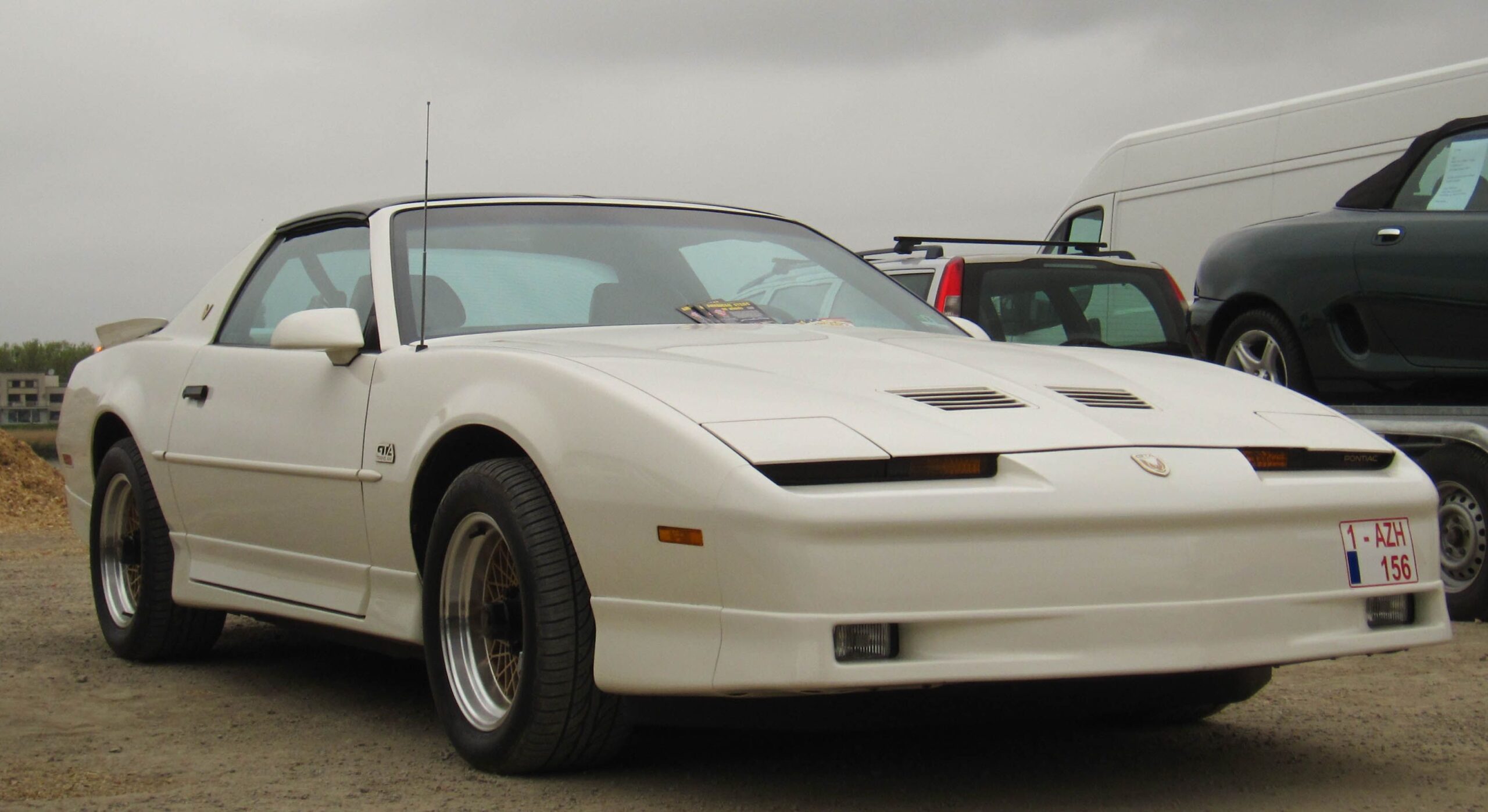
12. **1987 Pontiac Firebird Formula** Emerging as a compelling alternative to its more flamboyant sibling, the Trans Am, the 1987 Pontiac Firebird Formula was introduced with a clear mission: to democratize high-performance and make it accessible to a broader audience. This package was thoughtfully designed to be lighter and more economically viable than the Trans Am, aiming for a lower price point, potentially around $10,000, which made it an incredibly attractive option for budget-conscious enthusiasts seeking exhilarating performance without the premium cost.
Despite its more approachable price, the 1987 Pontiac Firebird Formula was by no means a compromise in driving excitement. It featured key performance enhancements such as lightweight aluminum wheels and a more aerodynamic body kit, contributing to its agile handling and purposeful stance. Powering this dynamic machine was a 2.8-liter V6 engine, which, while less powerful than the Trans Am package’s 205 horsepower engine, still produced a spirited 145 horsepower. This combination, along with the option of a manual transmission, ensured the Firebird Formula delivered impressive performance qualities on the road, earning its reputation as a true driver’s car and a favorite among those who appreciated its pure, unadorned performance potential.
The 1980s was indeed a transformative decade for the automotive industry, characterized by a potent blend of innovation, daring designs, and significant engineering breakthroughs. Our journey through these rare American cars underscores the resilience and ingenuity of manufacturers who, despite facing economic shifts and evolving regulations, rose to the challenge and delivered vehicles that masterfully balanced performance, luxury, and distinctive style. From the cultural icon that transcended its origins to the hidden muscle cars that defied expectations, each of these vehicles represents a unique piece of automotive history, reflecting an era that embraced cutting-edge technology and celebrated speed.
Car Model Information: 2025 Volkswagen Atlas 2.0T SE
Name: Pontiac Firebird
Caption: The second, third, and fourth generations of,the Pontiac Firebird Trans Am
Manufacturer: Pontiac (automobile)
Production: February 23, 1967 – August 30, 2002
ModelYears: 1967 – 2002
Class: Pony car,Muscle car
Platform: GM F platform
Related: Chevrolet Camaro
Layout: Front engine, rear-wheel-drive layout
Categories: 1970s cars, 1980s cars, 1990s cars, 2000s cars, All articles with dead external links
Summary: The Pontiac Firebird is an American automobile built and produced by Pontiac from the 1967 to 2002 model years. Designed as a pony car to compete with the Ford Mustang, it was introduced on February 23, 1967, five months after GM’s Chevrolet division’s platform-sharing Camaro. This also coincided with the release of the 1967 Mercury Cougar, Ford’s upscale, platform-sharing version of the Mustang.
The name “Firebird” was also previously used by GM for the General Motors Firebird series of concept cars in the 1950s.
Get more information about: Pontiac Firebird
Buying a high-performing used car >>>
Brand: Pontiac Model: Firebird Formula
Price: $40,000 Mileage: 8,605 mi.
Read more about: The Cars That Became Stars: 12 Iconic Vehicles from 70s & 80s TV & Film
These machines are more than just modes of transport; they are cultural symbols of a period that valued audacious design and advanced engineering. Their legacy continues to resonate today, not only influencing modern automotive trends but also serving as a vibrant reminder of a time when American car manufacturers were unafraid to innovate, push boundaries, and craft vehicles that captured the imagination. The enduring collectibility and admiration these cars command speak volumes about their intrinsic value and the indelible mark they left on the automotive world, proving that true innovation, even when initially overlooked, eventually shines brightly for generations of enthusiasts.

